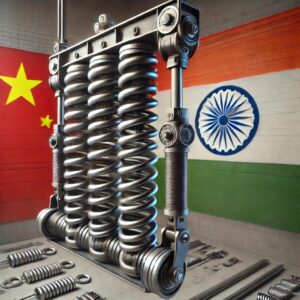Even though China private equity (PE) activity has cooled down (see here and here), our law firm has even this year been involved in many U.S. PE transactions involving China entities, employees, and assets. These deals are typically conducted at the U.S. entity level between two private equity groups, with the seller in each instance owning a China wholly-foreign owned enterprise (WFOE), often owned through a specifically formed U.S. or Hong Kong subsidiary.
We are often retained by either the PE group or its U.S. legal counsel. Many PE groups work with a range of law firms with varying expertise, so it is common to have multiple law firms involved to deal with both the U.S. and the international aspects of the deal. Our law firm is a valuable participant because we can deal with the international components of the transaction, and we are not a mega international firm that would otherwise be keen to poach the PE client from its normal U.S. legal counsel.
Conducting Due Diligence
These deals virtually always start with a document dump into a virtual data room (VDR) by the seller team. Depending on the size of the deal, the complexity of the seller’s business, and the seller’s general recordkeeping prowess, the VDR could be filled with hundreds or thousands of documents.
PE deals tend to have very well-organized VDRs because of the frequency of deals in which the PE firms are involved. This is in stark contrast to the sometimes “dozen” documents (or worse, each page as a separate PDF) we receive after our initial due diligence request when doing international transactions involving only a buyer and seller acquiring or selling a business for the first time.
The first order of business for the VDR is determining which law firm will review which documents. This often necessitates downloading a spreadsheet of all folders and files in the VDR and modifying the spreadsheet to facilitate assigning folders or categories of documents to internal and external law firm teams. This spreadsheet will need to be regularly updated, with one law firm keeping the master version, to ensure that each document is reviewed and additional documents are added to the spreadsheet as they are added to the VDR by seller’s team. This can also be saved in the cloud (Google Drive, Microsoft Teams, etc.) where all teams can update it simultaneously.
The Due Diligence Memo
The purpose of conducting due diligence is so that the buyer’s law firms can prepare memos regarding their due diligence findings. We enjoy working with PE buyer clients because they are invariably smart and experienced and want to understand, categorize, and quantify the potential risk in their deal. They will use the due diligence memo findings to negotiate with the seller on the overall purchase price, the indemnity bucket, and the scope of the indemnity language in the purchase agreement.
We write our due diligence memos on a country by country basis and we initially break our findings down into at least six categories: (1) major concerns, (2) minor concerns, (3) additional documents to request from the seller, (4) additional questions to ask the seller, (5) items to track pre-closing and post-closing, and (6) documents recommended for translation into English.
Major Concerns and Minor Concerns
For documents or scenarios where we have full responses from the seller, we include only major and minor concerns in the due diligence report, while omitting anything we do not consider a material issue. Major concerns are often potential deal killers, such as fraud or concealment, lack of essential licenses or permits, unresolved employee issues, or non-market-standard practices that call into question the entire business model.
Minor concerns are significant but resolvable items that our buyer client should ensure are completed pre-closing by the seller or immediately post-closing by the buyer team. These items often include unsigned contracts, expired contracts, undocumented oral contracts, or expired permits or licenses.
Follow-up Due Diligence Items
Often after receiving the initial due diligence request list, the seller group will either provide a vast trove or a miniscule percentage of the documents requested. Both of these scenarios require follow-up in terms of additional documents and answers to questions.
A good seller will continue to promptly provide responses and documents as often as additional requests are sent. It is a significant – but not insurmountable – red flag when we consistently get a response from a seller that they have provided everything they have. Even the most robust initial document dumps will be supplemented during the weeks and months leading up to the closing.
All major concerns need to either be resolved pre-closing by the seller group or assumed by the buyer group to resolve post-closing. For situations and items that we classify as minor concerns or that are less than minor concerns, we need to determine by whom and when they will be completed.
As much as possible, we assign these to the seller’s team to resolve before the closing date, but they are items that the buyer group can deal with post-closing. In the China context, examples include government reports (including regarding the transaction), ensuring taxes are remitted, getting unsigned contracts signed by the party whose signature is missing, and transitioning incorrectly classified independent contractors to employees. See Understanding China Employment Laws and Employees.
Lastly, we provide a list of documents we reviewed in Chinese but that the buyer PE group will probably want translated into English. These include the entity formation documents and bylaws or operating agreement, as well as contracts with key vendors and suppliers and all employment agreements.
It Never Goes Perfectly
We have almost never done a transaction with a PE group that went completely smoothly. In China, for instance, the seller is 99% never completely in compliance, and it is best to expect that reality at the outset. Caveat emptor always applies, especially in China. The buyer group just needs to determine whether the transaction is worth pursuing, how much the noncompliance should factor into the purchase price, and how compliant the buyer PE group plans to be post-closing.
For more information, read:


























